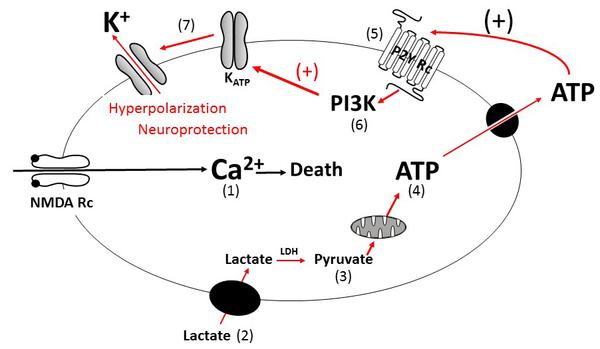
(1) Excessive glutamate activity triggers a strong influx of calcium (Ca2+) into the neuron through NMDA receptors, which leads to cell death. (2) Lactate is transported into the neuron and (3) converted to pyruvate by the enzyme lactate dehydrogenase (LDH). (4) Pyruvate is then transported into mitochondria by the mitochondrial pyruvate carrier (MPC) where it generates ATP. (5) ATP is then released through pannexins and activates the receptor P2Y, which (6) activates the PI3K pathway. (7) This triggers the opening of potassium channels (K+), which causes the neuron to hyperpolarize, decreasing the neuron’s excitability, and thus protecting it from excitotoxic damage.
Researchers led by EPFL have found how lactate, a waste product of glucose metabolism can protect neurons from damage follo...
Read More





Recent Comments